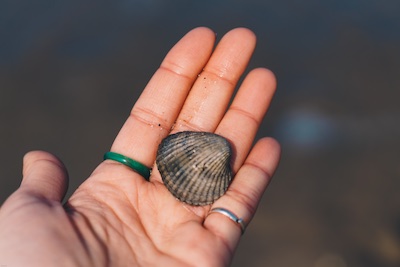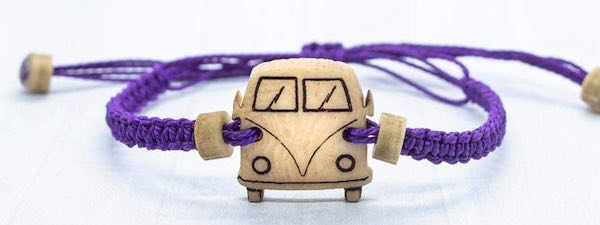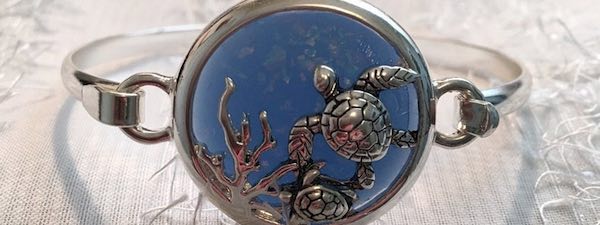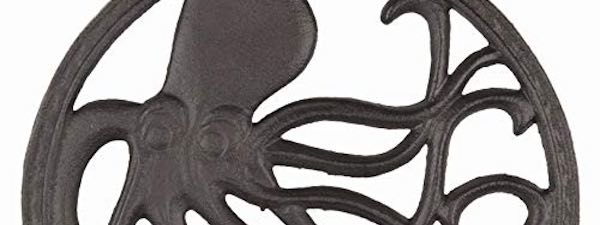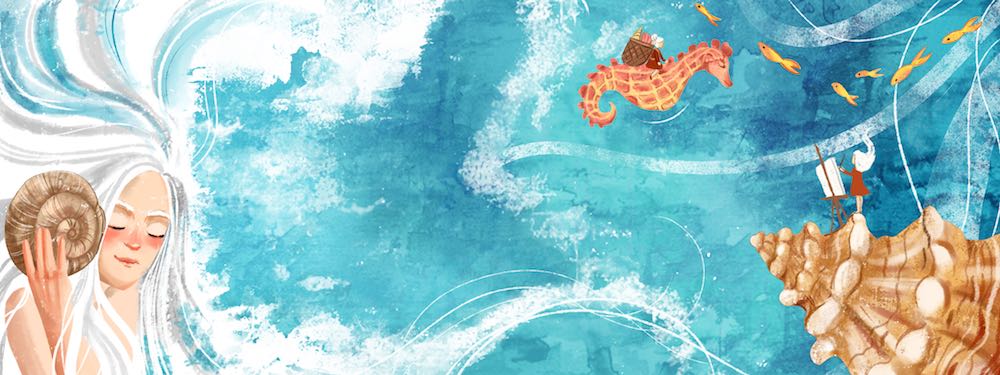Finding Shells ~ When and where to look for seashells
A natural part of any beach vacation (or living near a beach) is looking for seashells. Check out our guide for tips to finding the best shells!

When is the best time to find seashells?
Usually the best time for finding shells is at Low Tide or when the tide is heading toward Low Tide — even better is Low Tide after a storm. That’s the very best time to find seashells!
Most experienced beachcombers will try to get to their spots about an hour before Low Tide. And they plan to stay until about an hour after Low Tide.
Now, you’ve probably heard the expression “the best-laid plans of mice and men often go awry.” Well, I find this is often the case with my plans for finding seashells.
Often I get too excited about the thought of searching my local beach that I will head out there way before the tide has dropped (although I can usually contain myself until the tide is at least going down).
And much more difficult is this whole concept of staying an hour after Low Tide.
You see, once I’m there I often get so wrapped up in combing the shore for shells that I will stay much longer than an hour. Sometimes I stay so long that the tide has come up again quite a bit and I’m wading through surf that was once dry sand, still hoping to find shells.
There’s just something so exciting and addictive about finding shells that we often don’t want to leave!
Check out my list of 50 Best Seashell Artists
Why is Low Tide best for finding shells?
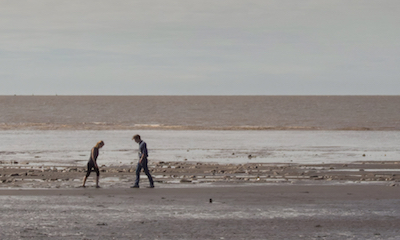
Low tide is great for finding shells!
Photo by Brett Jordan on Unsplash
It’s the waves that bring in all of the things from the sea. As the tide comes in, that means that the waves are coming in further too, dropping things like shells further inland.
You can picture it like sweeping a floor: as you sweep a floor, more and more dust gathers in front of your broom, right? And you keep pushing that ever-increasing pile. If you step backward, then that pile of dust stays where it is.
It’s pretty similar with the waves pushing seashells, sea glass and driftwood toward the beach. As the tide rises, those sweeping waves move further and further inland. As the tide recedes, that wonderful pile of shells stays where it was deposited.
That’s why Low Tide tends to be the best time to find seashells.
How does weather play a role in finding seashells?
Knowing that waves push seashells inland you can probably see how weather might do the same — strong winds can push those waves in even further than the tide would normally bring them.
This means that after a storm — especially after a storm which had pretty strong winds blowing consistently inland — is an excellent time to head to the beach in search of seashells!
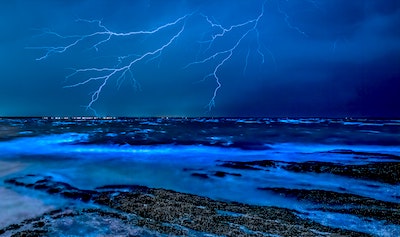
Bad weather can wash lots of seashells ashore!
Photo by Trevor McKinnon on Unsplash
You’ll also get a lot of other things deposited by the tide, including driftwood and that special treasure: sea glass! So once that storm subsides, grab your gear and head out to the beach to look for shells, this is one of the best times to find shells.
And if the end of the storm also coincides with Low Tide… you may have just hit the beachcombing jackpot!
When is Low Tide?
It’s important to remember that Low Tide has nothing to do with the time of day (obviously then, neither does High Tide). Tides are basically water bulges caused by the sun and moon pulling on the earth’s water, so when tides occur depends on where the sun and the moon are at any given time.
Amazingly, tides can be predicted years in advance!
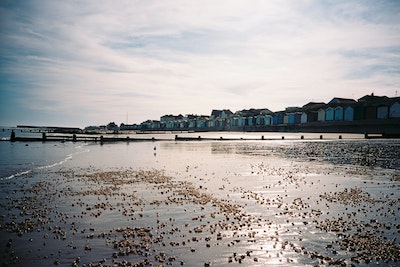
Somebody knew years ago that this beach would be full of shells today!
Photo by Nick Page on Unsplash
To find out when Low Tide is where you’re planning to look for shells you’ll need to consult a tide table or if one exists for your beach, a tide chart (tide charts are more localized, so check to see if there is one for your beach — if so, great!).
A lot of people who don’t live near an ocean find this a little confusing. I’ll admit that when I lived in The Rocky Mountains, long before I lived near a beach, I just kind of assumed that the tide followed some regular pattern. It just seems like it would do that, doesn’t it?
I know that a lot of people assume that the tide is low in the morning and high at night. But, that just isn’t so.
By the way, not only does the time of Low Tide vary from day to day, how low Low Tide is and how long Low Tide stays low varies by the day as well.
You can have one day when Low Tide barely exposes the sand and another when Low Tide makes it seem like there are acres of beach between you and the breaking waves.
You can have a day when the tide seems to go in and out multiple times and you can have a day when you would swear that the tide has hardly moved at all.
These are important things to consider when it comes to looking for and finding shells. Obviously a tide chart is a very helpful tool!
Is morning or night better for finding seashells?
If tides are the main factor in depositing shells on your beach, does it make a difference whether you go searching for shells in the morning or at night? For most busy beaches, the answer would be yes.
Why? Because of people.
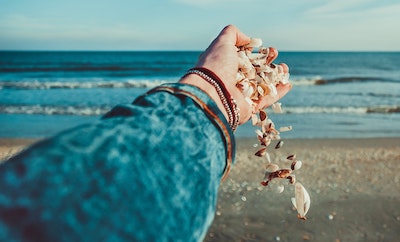
I love seashells in the morning!
Photo by Razvan Narcis Ticu on Unsplash
Obviously, if we’re talking about some secluded beach that only a few have access to, then the time of day probably doesn’t matter. But for most of us, we’ll be looking for shells at public beaches which attract a lot of visitors.
For most beaches that I’ve seen, the crowds don’t usually show up too early. It’s the middle of the day that is the most popular.
If Low Tide happens in the middle of the day when the beach is crowded with beachgoers you’ll have a lot of competition for those shells (you’ll also have people who don’t notice or who don’t care about shells stepping on and breaking them).
So, generally speaking, if you are able to get up early enough to beat the crowds, and especially if it is timed well with Low Tide, you will likely have much better luck than later in the day.
And, of course, if Low Tide happens long enough after sunset that pretty much everyone has gone home, then that may be the best time to find seashells. So grab a flashlight or headlamp and start your adventure!
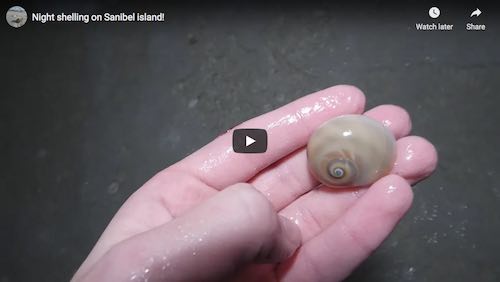
Shelling at night can be quite an adventure! Youtube
Should you take someone with you to find shells?
Though searching for seashells does tend to be kind of a solitary activity, I personally always enjoy having someone along with me for a few reasons.
First, you’ve got someone to share your excitement with. There’s a certain focus that seems to take over when you start your shell search (I think it’s kind of an addiction). But when you find that really great find, that focus changes and you break out in excitement.
And it is so great to be able to turn to a friend or family member and shout, “Look at this!”

But beyond that, having another person can also help with the search itself. As I mentioned, when you get into that seashell-finding zone it really takes over your focus. You can get so caught up in searching out every little detail of the coast that you miss the bigger picture.
This has happened to me many times. As I intently scan the sand for even the tiniest of finds, my husband, who is just casually walking his feet through the surf notices a great find that I missed.
So, bring someone along. I’ve given you a few great reasons to do so!
Check out my article on Seashell Wreaths
Should you take kids to find seashells?
Absolutely! If you’ve got small children in your life I would absolutely recommend bringing them along on your seashell adventures.
In addition to the reasons you would bring anyone along — someone to share your find with and a “second set of eyes” — kids seem to have an innate talent for finding interesting things on shorelines. I don’t know why that is, but it certainly seems to be true. So it shouldn’t seem surprising that kids are good at finding shells.
Obviously, depending on the age and the individual child, attention span may be an issue. But for that time that they are focused on finding beach treasure I’ve found that kids find much more than their fair share!
Where is the best place to find seashells on a beach?
Although it often depends on the beach, one place that’s always good to look on any beach is the edge of where the sand is wet.
This makes sense, since the best time to look for shells is Low Tide or as the tide is receding, that means that the line between where the sand is wet and where the sand is dry is the farthest inland that those shell-depositing waves made it.
So you should always look for that edge. That can often be the best place to find seashells.
But different beaches may reveal even better places than that. So your best bet on where the best place is to find seashells may be to ask a friendly local.
For instance, our beach — like a lot of West Coast US beaches — runs up against rocks and cliffs which form natural little coves. I’ve found that on our beach these are the best places to look to find shells, provided that the last High Tide was high enough to reach those coves.
Something similar can be said for tide-pools. Not every beach forms tide-pools, but ours does and they can prove to be a great place for finding shells.
Where my daughter lives on the Hawaiian Island of Kauai, the beaches regularly get pretty large chunks of driftwood washed up ashore. And underneath these big driftwood logs can often be found a wide array of fantastic shells which the wood trapped there after the tide went down.
So on those beaches in Kauai, the best place to find seashells was, without a doubt, underneath those big chunks of driftwood.
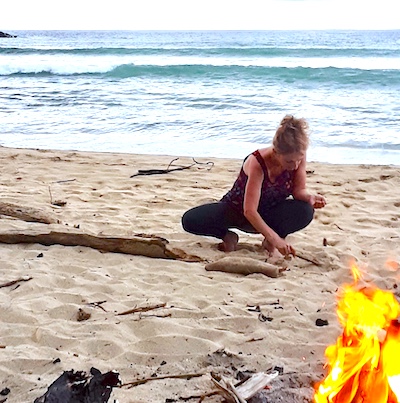
After those great finds, I absolutely had to check under each and every piece of driftwood!
So always look for that edge of wet sand, and if you can, ask a local!
Here’s a fun list of 101 Seashell Gifts!
Do some beaches have more shells than others?
Yes. And now that I think of it, maybe I should have mentioned that one earlier 🙂
There are some beaches that are well-known for having a whole lot of shells washing ashore, so obviously, finding shells at those beaches will be relatively easy. Sanibel Island in Florida, for example is famous for having tons of shells washing up on its beaches. There actually are enough shells on the island that several local companies offer shell-collecting tours.
Some other beaches around the world that are famous for shells — and of course these beaches would be your best bets for the best place to find seashells — these include: Ocracoke Island in North Carolina, Galveston, Texas, Tunnels Beach in Kauai, Hawaii, Eleuthera Island in The Bahamas and many more.
Also, when we’re talking about US beaches, the East Coast beaches in general tend to cough up more shells than the West Coast beaches.
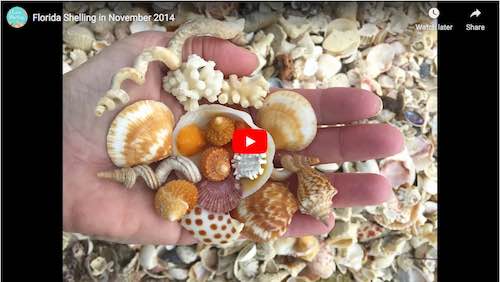
This Florida beach has a few more shells than our California beach. Youtube
Lucky for us, although our local beach doesn’t have nearly as many seashells as Sanibel Island, we are still treated to a steady stream of shells on a consistent basis. There are a whole lot of mollusks in the waters around our beach, so it makes sense that we get a steady supply of seashells.
It also explains why the seals like to hang out here — so many seals sun themselves on our local beach that a section of that beach has been set aside as a seal sanctuary! So, not only do they have a lot of mollusks to feast on, they can lounge on the beach after lunch without people bothering them.
What a life!
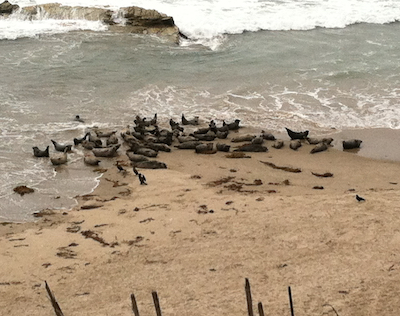
Seals hang out on our beach and nobody bothers them.
How long does it take to find shells?
One of the joys of hunting for shells is that you never know what you’ll find, in what quantities you’ll find them, and how long it will take.
Sometimes you hit the beach at just the right time and you are confronted with lines and lines of shells.
Sometimes you search for hours without finding anything good.
Sometimes you find something special just as you’re getting ready to leave.
That’s part of the fun of it!
What do I bring shelling?
The main thing that I find I need to bring — and I have to remind myself not to forget in my excitement to get to the beach — is something to put the shells in!
I never have enough pockets for seashells!
I prefer to bring a bag. In fact, I personally think that this is a great way to reuse those plastic bags that we always end up with despite trying not to end up with plastic bags. They’re light and easy to carry and they’re basically watertight — perfect for the beach while also being a great way to keep them out of the ocean.
Of course people look around for your dog, as they assume that’s why you’re walking around with a little plastic bag, but that’s another story.
There are some who swear that a bucket or pail is the only true container for shells, but I’m not that much of a purist.
Also remember that you’re going out into the sun, so you need to bring the usual types of sun-protection that you would at any other time going to the beach. You need that sunscreen (especially since you’ll probably get so focused on beachcombing that you forget all about the amount of time you’re spending in the sun). And I always try to remember to wear one of my big, floppy hats. They are excellent at keeping the sun off of me as my attention is focused down at my feet.
And of course, bring your excitement and sense of wonder!
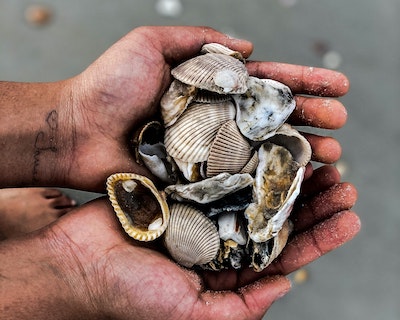
This is what happens when you forget to bring a bag!
Photo by Savannah Knuppel on Unsplash
What if something is still living in a shell?
If something is still living in the shell, it seems to me that the right thing to do is to leave it alone. That’s what I do. And in many locales, it’s what you have to do.
You may remember a few years ago that a Florida tourist was charged and given 15 days of jail time for collecting shells which still had living mollusks in them. According to Florida Fish and Wildlife, the gathering of empty shells is perfectly legal in Florida, but if somebody’s still living in a shell, that can land you in jail!
So you might want to put those shells back.

Where do seashells come from and why are seashells empty?
Most seashells come from mollusks. Examples of mollusks would be snails, slugs, oysters and octopi. Since mollusks are soft-bodied creatures, they build a hard shell to protect themselves. As they grow, they build those shells bigger. This is where shells come from.
So technically, the shell is not part of their body, it’s something they’ve made. Kind of like the shells are their clothes!
And if the shells are empty? Well, most often that means that the mollusk that lived in it has died and its body has either decayed or more likely been eaten by some other sea creature.
But we will always remember them for what they left behind for us!
Books about shelling
There are some great books around about the hobby of collecting seashells. Here are a few:
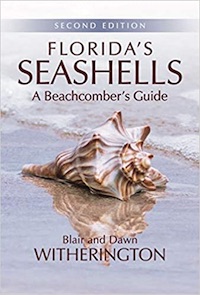
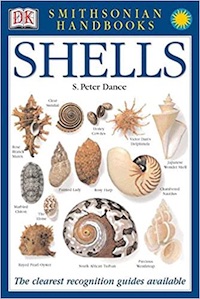
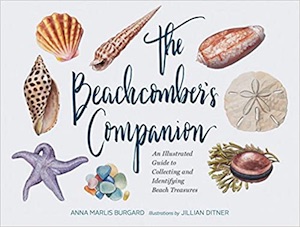
And now?
I hope I’ve given you a good overview for finding seashells and I also hope that I’ve conveyed some of the excitement it brings.
Happy shell hunting!
Finding Shells
Thanks for checking out this Seashell Madness guide to finding seashells. If you liked it, please share it on your social. Thanks!
Written by Renee

